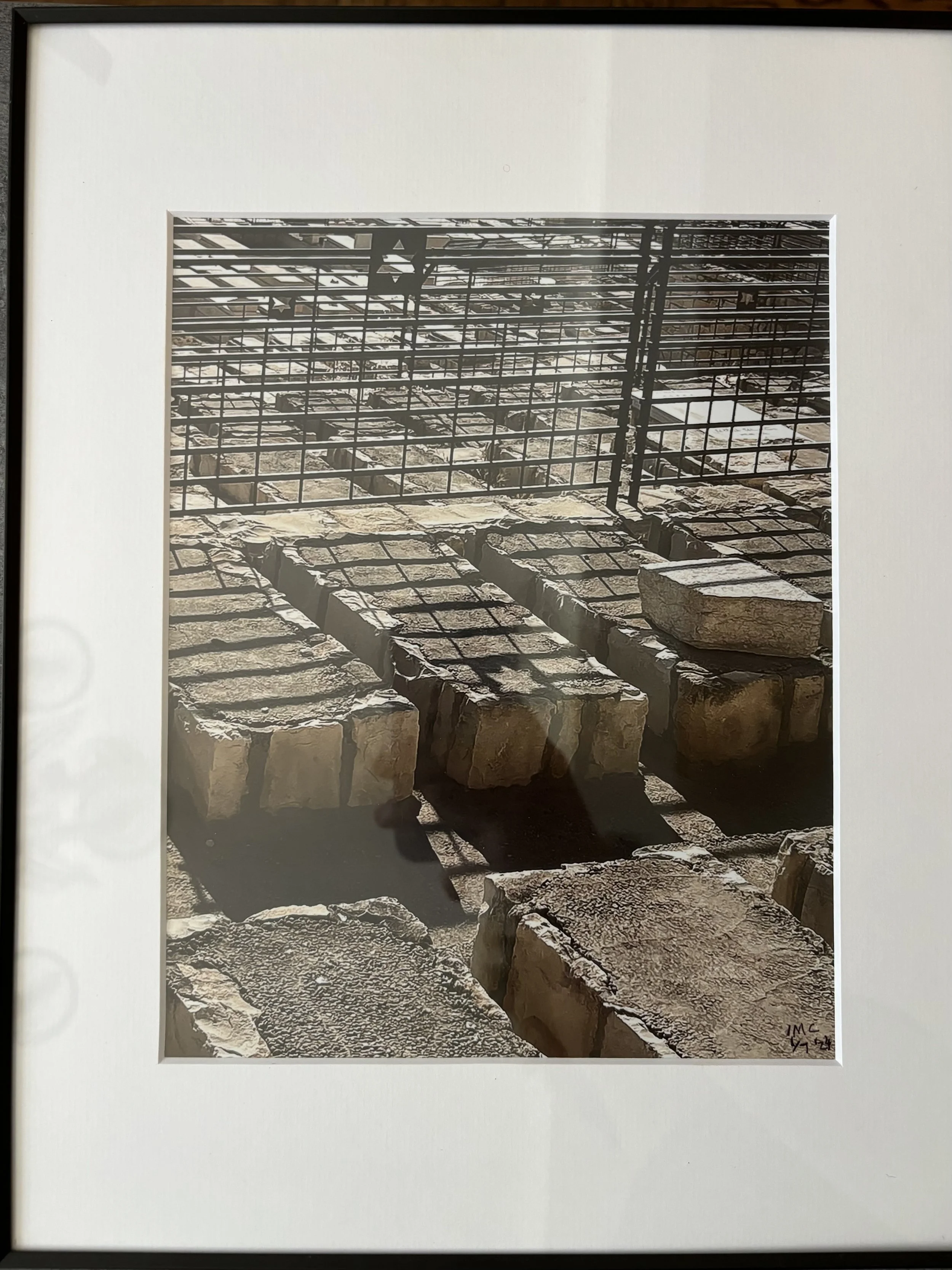The 10th of Sivan, 5783
-
8" x 10" Photograph, printed on Kodak Metallic Finish paper.
Limited Edition of 7, framed in a sleek 11" x 14" black metal frame with white matting.
-
I took this photo on May 30th, 2023, or the Hebrew calendar’s 10th of Sivan, 5783, in Jerusalem, Israel on tour with a private guide and archeologist at the Mount of Olives Cemetery, the oldest Jewish cemetery in the world. What is unique about the photo is it reveals an ugly aspect of Israel’s war of independence in 1948, when Jordan would occupy what became known as “East Jersualem,” not only barring Jews access to their holy sites, including the entire old city, but also the Jordanian’s documented desecration of Jewish tombstones in the Mount of Olives, using some gravestones to pave roads. What struck me about this particular moment, was the Star of David shadow cast upon the grave bed through the fence, marking this desecrated resting place with the symbol of the Jewish people. An unnamed soul, yet part of an eternal collective.
-
https://www.jewishvirtuallibrary.org/the-mount-of-olives
"The Mount of Olives Under Jordanian Rule
On the eve of Israel’s War of Independence in 1948 there were about 60,000 graves on the Mount of Olives. When hostilities were initiated by the Arabs against the Jewish community, the Jews risked their lives to continue to bury their dead on the mount. However, when the violence intensified they were forced to prepare “temporary” cemeteries in the western part of the city.
Vandalized tombstones at the Mount of Olives.Jordan had obligated itself within the framework of the Armistice Agreement that it had signed with Israel on April 3, 1949, to allow “free access to the holy sites and cultural institutions and use of the cemeteries on the Mount of Olives,” but did not honor its obligation.
At the end of 1949, Israeli lookouts posted on Mount Zion reported that Arab residents began uprooting the tombstones and plowing the land in the cemeteries. The destruction of the cemeteries continued over the course of the 19 years that the Jordanians ruled eastern Jerusalem. Four roads were paved through the cemeteries, in the process destroying graves including those of famous persons. Skeletons and bones were strewn about and scattered. Tombstones were used as paving stones for roads in the Jordanian Army camp in Azariya, east of Jerusalem. In Azariya, a telephone booth was found built out of tombstones, and Jewish tombstones were also used as flooring for latrines. Uprooted tombstones were also used in Jordanian military positions surrounding the city. Both the newer sections and ancient graves were destroyed, some a thousand years old.
A gas station and other buildings, including the Intercontinental Hotel, were erected on top of ancient graves. Israel attempted to focus global attention and alert international institutions to the destruction that was being perpetrated, but to no avail. In 1954, Israel protested to the United Nations over the destruction of graves and the plowing up of the area.
In 1956, the Jordanians attempted to pave a new road through the cemeteries, Israel complained, and the work was halted. In July 1963, Israeli lookout posts again reported that Jordanian soldiers were destroying the tombstones. After the site was liberated in 1967, about 38,000 smashed or damaged tombstones were counted. The slow rehabilitation of the mount and the tombstones has continued until this very day, and Jewish burial at the site was renewed."
(Jewish Virtual Library)
-


